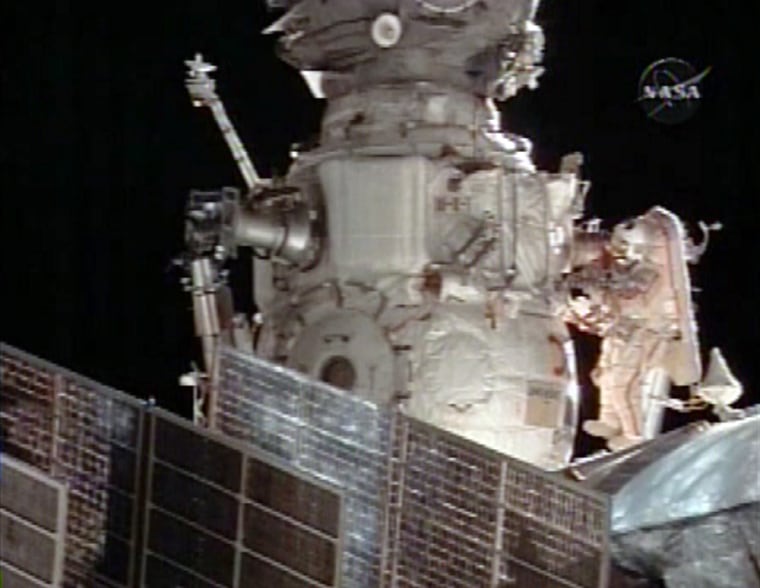American and Russian spacewalkers installed a probe Tuesday aimed at tracking down problems with a Russian module attached to the international space station and conducted an array of other maintenance and scientific work.
But in a setback toward the end of the Russian-controlled operation, American Michael Fincke, the station’s commander, and Russian Yury Lonchakov had to remove a device they had just installed because of data transmission problems.
A NASA video feed showed Fincke and Lonchakov in their Russian-made spacesuits leaving the station from a hatch on its docking compartment 200 miles (320 miles) above Earth.
“OK, going out into space again,” Fincke said in Russian. “It’s good to be here again.”
Russian scientists hope data from the probe installed by Fincke will help explain malfunctions that have repeatedly occurred as the Russian module has attempted to separate from the space station.
Russia’s Soyuz module entered Earth’s atmosphere too steeply in separate descents after detaching from the station in October 2007 and April this year, leading to faster- and bumpier-than-usual falls for the crews.
Investigators believe the Soyuz capsule detached too late because a so-called pyrobolt — an exploding connector that keeps the module fixed to the space station — failed to detonate on time.
Much of the spacewalk was devoted to arranging connectors and cables for various probes and experiments, and ensuring the reliability of telemetry from the data-gathering equipment.
Problem with experiment
Fincke and Lonchakov discovered a problem with the data transmission of a device they installed on a small platform outside the station’s Zvezda module. The European Space Agency experiment was supposed to gather data on the effects of the space environment on a variety of materials.
“I think we have done all we can. Why isn’t it working?” Lonchakov said after reconnecting the cables several times. They disassembled the experiment so it could be taken back inside the station after the spacewalk.
Another device was successfully placed on the same platform to measure the plasma environment around the station. The pair also removed a biological experiment known as Biorisk 2.
Fincke and Lonchakov attached cables and performed other tasks as the sun periodically rose and set on the cosmic construction site.
Relaxed mood
They joked with each other early in the spacewalk and appeared to be in a relaxed mood.
Slideshow 12 photos
Month in Space: January 2014
“Misha, look this way, I’m taking a picture of you,” Lonchakov said.
“You are like paparazzi,” Fincke said.
The two wrapped up the spacewalk after five hours and 38 minutes of work. It was Fincke’s fifth spacewalk, Lonchakov’s first and the 119th spacewalk conducted from the international space station.
NASA flight engineer Sandra Magnus, the third member of the station’s Expedition 18, was inside the station helping coordinate the mission with ground centers in Houston and in Korolyov, just outside Moscow.
More on Spacewalks | Space station

